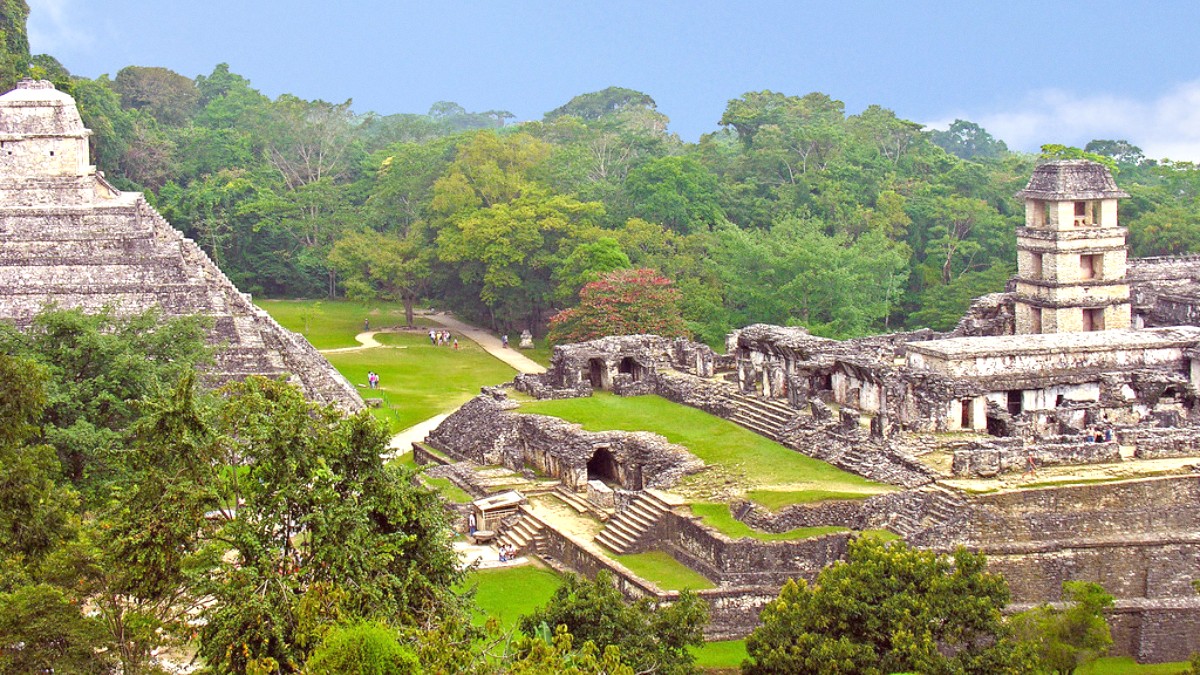
Tabasco And Chiapas, Mexico
Palenque is a town and an archaeological site located in the northeastern part of Chiapas, Mexico. It sits on a gentle shelf, part of the Sierra Madre de Chiapas mountain range, offering views that stretch towards the vast Gulf Coast plains. The surrounding landscape forms a dense tropical rainforest, a significant portion of the Lacandon Jungle. This area pulses with life, crisscrossed by numerous rivers and waterfalls. The Otolum River, for example, flows directly through the ancient Maya archaeological zone, shaping the very environment of the ruins. Palenque town acts as the main gateway, connecting travelers to the majestic ancient city and the natural wonders that envelop it. This geographical positioning creates an unique blend of accessibility to historical sites and deep immersion in a thriving ecosystem. The tropical climate means year-round warmth, with distinct wet and dry seasons influencing the jungle's character and the visitor experience.
Palenque is a distinguished place among the Maya civilization's most important archaeological sites. This powerful city-state flourished during the Classic period, from approximately 250 to 900 AD. Its peak influence occurred notably in the 7th century under the reign of remarkable rulers. K'inich Janaab' Pakal I, often known as Pakal the Great, ruled for nearly 70 years, overseeing a period of vast expansion and artistic achievement. His son, K'inich Kan Bahlam II, continued this legacy. Palenque gained fame for its elegant architecture, which departs from the more monumental styles found elsewhere. The site boasts intricate stucco carvings that depict rulers, deities, and mythological scenes with a fluidity and realism uncommon in other Maya cities.
Its hieroglyphic inscriptions, found on temples and stelae, offer detailed dynastic histories, recording births, ascensions, and significant events, offering historians an invaluable window into Maya political and social structures. The most famous structure, the Temple of Inscriptions, achieved renown for housing the tomb of Pakal the Great. Its discovery in the mid-20th century gained unprecedented insights into Maya burial practices and cosmology. Other significant structures include The Palace, a complex of courtyards, galleries, and a distinctive four-story tower, believed to function administratively and ceremonially. The Cross Group, comprising the Temples of the Cross, Foliated Cross, and Sun, is another architectural marvel, each temple dedicated to a different aspect of Maya creation mythology. These structures collectively tell a compelling story of a civilization that achieved extraordinary feats in art, astronomy, and writing before its decline. UNESCO recognized Palenque's global importance in 1987, designating it a World Heritage site, a testament to its universal value and the need for its preservation. This ancient city represents a pinnacle of Maya ingenuity and artistic expression, a tangible link to a sophisticated past.
Beyond the historical ruins, Palenque offers natural beauty with captivating waterfalls and rich biodiversity. Visitors experience a tropical climate year-round, ideal for exploring both the ancient structures and the jungle's hidden wonders.
Palenque provides a deeply immersive journey into an ancient world, framed by the sounds and sights of a thriving ecosystem. This Mexican destination, located in the humid Chiapas lowlands, is home to one of the most stunning ancient Maya cities.
Northeastern Chiapas, Mexico, near the Lacandon Jungle.
Tropical rainforest, warm and humid year-round with distinct wet/dry seasons.
Ancient Maya city ruins, Temple of Inscriptions, The Palace, Cross Group, nearby waterfalls (Misol-Ha, Agua Azul).
Classic Period (250-900 AD) Maya civilization, especially the reign of Pakal the Great.
World Heritage site, recognizing its outstanding universal value.
Palenque presents an experience where history and nature combine. This Mexican destination, located in the humid Chiapas lowlands, is home to one of the most stunning ancient Maya cities. The archaeological site brings to light a powerful Classic period Maya city-state, notably flourishing under rulers like Pakal the Great. Beyond the historical ruins, Palenque offers natural beauty with captivating waterfalls and rich biodiversity.
The archaeological site is celebrated for its intricate stucco carvings, detailed hieroglyphic inscriptions, and iconic structures like the Temple of Inscriptions (housing Pakal the Great's tomb), The Palace, and the Cross Group temples.
Visitors experience a tropical climate year-round, ideal for exploring both the ancient structures and the jungle's hidden wonders. The region's ecosystem forms a backdrop for your historical journey.
Palenque truly immerses you in an ancient world, framed by the sounds and sights of a thriving ecosystem.
Palenque is a testament to the sophistication of the Maya civilization, nestled within a rainforest. It is a destination that captivates both history enthusiasts and nature lovers alike.
Here are compelling reasons to add Palenque to your travel itinerary:
Discover some of the most elegant and well-preserved Maya temples and palaces.
Explore ruins enveloped by dense rainforest, complete with exotic wildlife.
Enjoy refreshing dips and scenic views at nearby Misol-Ha and Agua Azul.
Palenque offers a range of experiences beyond the main archaeological site.